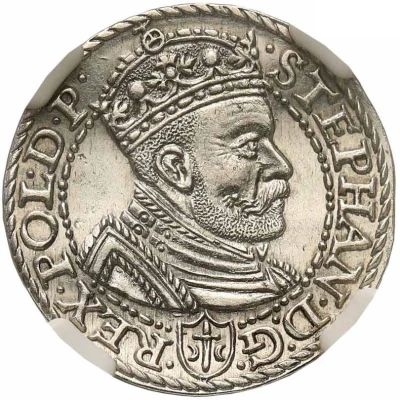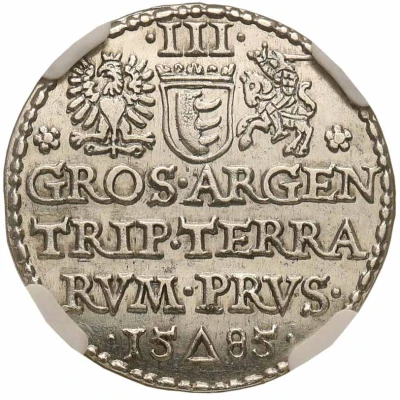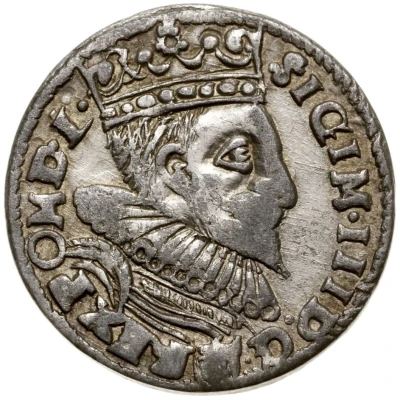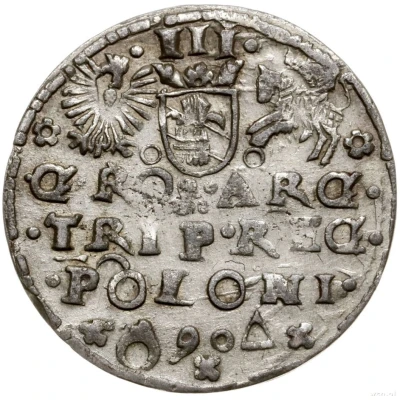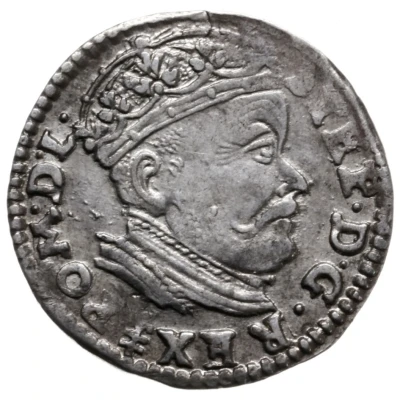
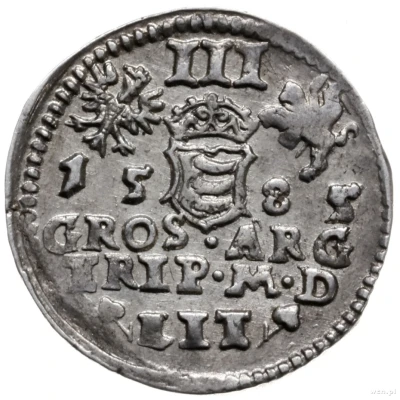

© Warszawskie Centrum Numizmatyczne s.j.
Trojak litewski - Stefan Batory Wilno
| Silver (.844) | 2.37 g | - |
| Issuer | Polish–Lithuanian Commonwealth |
|---|---|
| King | Stephen Báthory (1576-1586) |
| Type | Standard circulation coin |
| Years | 1585-1586 |
| Value | 3 Groschens (Trojak) (0.1) |
| Currency | First Zloty (1573-1795) |
| Composition | Silver (.844) |
| Weight | 2.37 g |
| Shape | Round |
| Technique | Hammered |
| Demonetized | Yes |
| Updated | 2024-10-07 |
| Numista | N#98931 |
|---|---|
| Rarity index | 89% |
Reverse
Inscription in three lines with date above divided by Bathory family arms. At top, Polish eagle, value (III) and Lithuanian rider. LIT flanked by two clovers
Script: Latin
Lettering:
III
15 85
GROS · ARG
TRIP · M · D
LIT
Unabridged legend: Grossi argenti triplex magni ducatus Lithuaniae
Translation: Silver three grossi of the Grand Duchy of Lithuania
Comment
Iger V.85.2aIger V.85.2b
Pictures: © WCN
Iger V.85.2c
Iger V.85.2d
Iger V.85.2e
Iger V.85.3a
Iger V.86.2a
Iger V.86.2b
Interesting fact
The Trojak litewski coin was used as a means of payment in the Polish-Lithuanian Commonwealth during the 16th century, and its design featured an image of Stefan Batory, who was the Voivode of Wilno (now Vilnius, Lithuania) from 1585 to 1586. The coin was made of silver and weighed 2.37 grams, with a diameter of 23 millimeters. Despite its small size, the coin played an important role in the economy of the Commonwealth, which was a significant power in Eastern Europe during that time.
